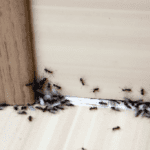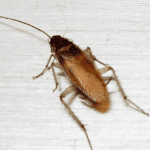What is decontamination?

January 11, 2024
/
What is decontamination?
What is decontamination?
Disinfection is the process started with the purpose of breaking the chain of germs, bacteria and other pathogenic microorganisms. It is a procedure to maintain hygiene and prevent the transmission of infectious diseases. It concerns all professional and non-professional areas and depending on the requirements and conditions. The work of disinfection refers to the removal, inactivation or destruction of harmful pathogenic microorganisms from spaces, surfaces or objects using Physical, Chemical or other means. It is different from Sterilization because it makes a space, a surface or an object largely – but not completely – free of infectious agents.How often should the space be disinfected?
It depends on the size of the space as well as the crowding. For example, in a house we recommend disinfection twice a year. In a professional environment with frequent meetings, we need to discuss the needs and the plan to be followed in a targeted manner.Why is it important?
It is important and necessary as in this way we take care and maintain a high level of hygiene in the area. At the same time. we reduce the risk of the spread of any diseases in places with an increased gathering of people (e.g. schools, restaurants, hotels, etc.)When and how should we clean and disinfect workplaces?
By cleaning a workplace we define the removal of all dirt, such as dust, food residues or foreign bodies, which cause the growth of microorganisms. Disinfection is defined as the reduction of the number of microorganisms, which are living cells. By cleaning and disinfecting work areas, the work environment is improved and contamination, microbial growth and other related hazards are reduced. The novel coronavirus (SARS-CoV-2), is an RNA virus that is transmitted primarily through large respiratory droplets and contact, but can there are other ways of transmission. The survival time and conditions affecting the survival of SARS-CoV-2 in the environment are currently unknown, however according to studies assessing the stability of coronaviruses, it is estimated that SARS-CoV-2 can survive several days in the environment on different surfaces.Below are instructions for two cases:
1) instructions for periodic cleaning of work areas, without suspicion of SARS CoV-2 and 2) instructions for the emergency cleaning of workplaces possibly infected by the new coronavirus, i.e. a place where a suspected, close or confirmed case has moved. In either case, allow the cleaner and/or disinfectant to air dry and follow the manufacturer's instructions. 1) Instructions for periodic cleaning of work areas. Systematic and sufficient ventilation of all areas at regular intervals.- Meticulous application of standard cleaning tasks, emphasizing frequent cleaning of frequently touched smooth surfaces (e.g. knobs, handles, handrails of stairs or railings, elevators, switches, faucets) with common cleaners, i.e. liquid soap and water, or compound 10% household bleach (1 part household bleach diluted in 10 parts water) or alcohol antiseptic.
- Use of disposable gloves and work uniform from personal cleaning. Gloves after use should be disposed of immediately in the plastic bags of waste bins and no attempts should be made to clean them, eg washing disposable gloves and re-using them. It should be noted that the use of disposable gloves does not replace hand washing in any case.
- The plastic bags of the bins, when full, must be tied tightly and removed immediately.
Special clarifications for disinfection
Public areas where the symptomatic person has just passed, such as corridors, are recommended to be cleaned according to the institution's normal cleaning procedures and always according to the detergent/disinfectant manufacturer's instructions and relevant national legislation. Surfaces that have been in contact with the symptomatic person should be collected and disposed of according to the above instructions.These surfaces include:
- items that are visibly soiled/contaminated with bodily fluids
- All surfaces that are possibly contaminated such as bathrooms, toilets, knobs, telephones, desks, computers, etc.
Air conditioner cleaner: Which one is right for you?
To clean and disinfect all hard surfaces, floors, chairs, knobs, etc., disposable cloths/cloths or cleaning paper and mops with detachable heads must be printed. Cloths/fabrics, paper and mop heads should be disposed of after each use in special bags and treated as infectious waste in case the cleaning involves areas where a confirmed case has passed through. Splashing and spraying must be avoided during cleaning and disinfection. In the event that some items cannot be cleaned, washed and/or disinfected as described above, such as e.g. upholstered furniture or mattresses, steam cleaning can be used. Although it is still unknown at what point in time the risk of transmission of the infection from the environment becomes zero, it is estimated that it will decrease over time. Studies done with the SARS-CoV and MERS-CoV viruses show that, in most cases, the risk is likely to decrease significantly within 72 hours. For this reason, if possible, it is recommended to carry out the cleaning 72 hours after the presence of the possible or confirmed cases in the area, because the load has been significantly reduced during this period of time. Read hundreds of articles that will answer any question about #cleansecta by clicking here.Recent Posts
cleansecta.gr
Mosquito protection measures
cleansecta.gr




